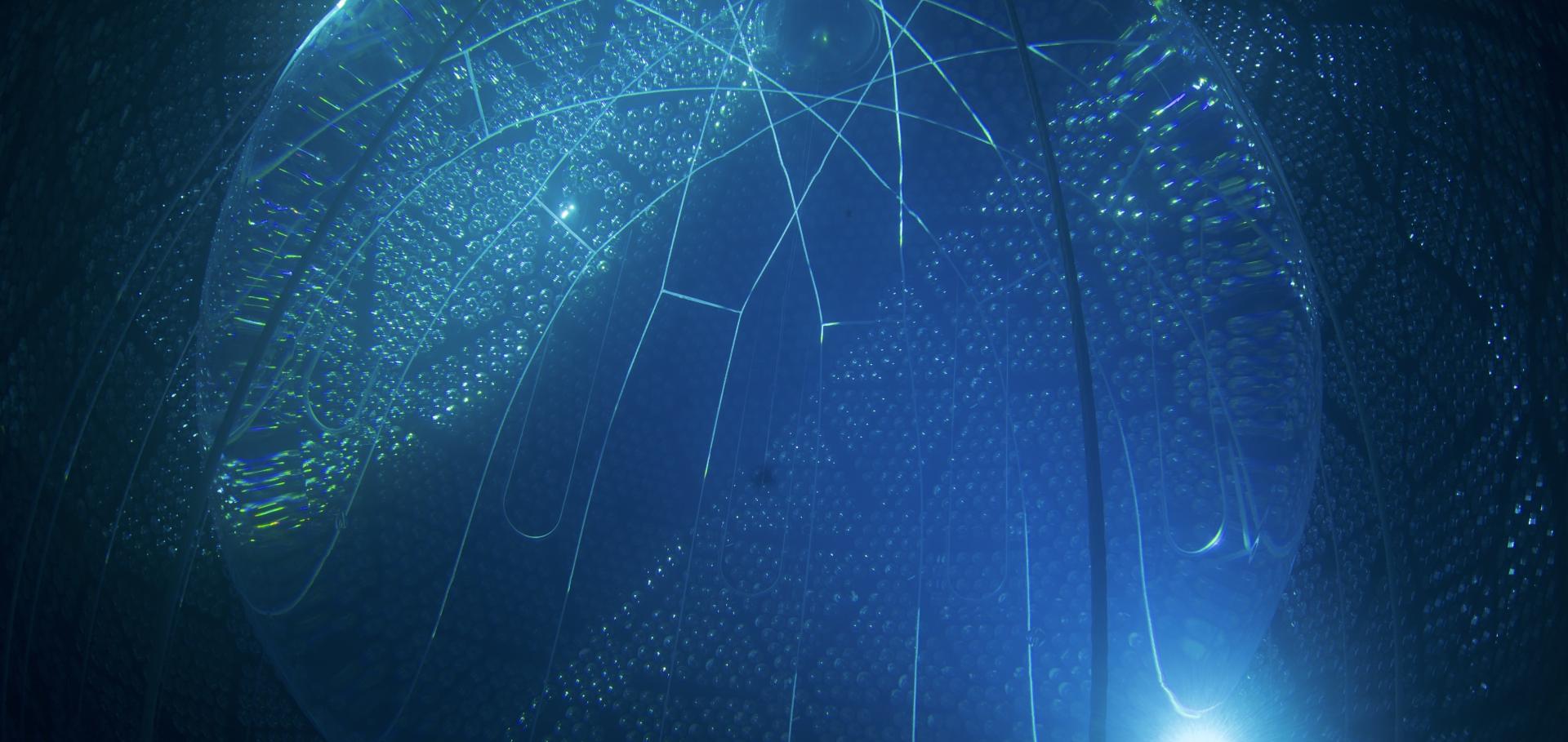The SNO+ Experiment
ArXiv 2104.11687 (2021)
Abstract:
The SNO+ experiment is located 2 km underground at SNOLAB in Sudbury, Canada. A low background search for neutrinoless double beta ($0\nu\beta\beta$) decay will be conducted using 780 tonnes of liquid scintillator loaded with 3.9 tonnes of natural tellurium, corresponding to 1.3 tonnes of $^{130}$Te. This paper provides a general overview of the SNO+ experiment, including detector design, construction of process plants, commissioning efforts, electronics upgrades, data acquisition systems, and calibration techniques. The SNO+ collaboration is reusing the acrylic vessel, PMT array, and electronics of the SNO detector, having made a number of experimental upgrades and essential adaptations for use with the liquid scintillator. With low backgrounds and a low energy threshold, the SNO+ collaboration will also pursue a rich physics program beyond the search for $0\nu\beta\beta$ decay, including studies of geo- and reactor antineutrinos, supernova and solar neutrinos, and exotic physics such as the search for invisible nucleon decay. The SNO+ approach to the search for $0\nu\beta\beta$ decay is scalable: a future phase with high $^{130}$Te-loading is envisioned to probe an effective Majorana mass in the inverted mass ordering region.Optical calibration of the SNO+ detector in the water phase with deployed sources
Journal of Instrumentation IOP Publishing 16 (2021) P10021
Abstract:
SNO+ is a large-scale liquid scintillator experiment with the primary goal of searching for neutrinoless double beta decay, and is located approximately 2 km underground in SNOLAB, Sudbury, Canada. The detector acquired data for two years as a pure water Cherenkov detector, starting in May 2017. During this period, the optical properties of the detector were measured in situ using a deployed light diffusing sphere, with the goal of improving the detector model and the energy response systematic uncertainties. The measured parameters included the water attenuation coefficients, effective attenuation coefficients for the acrylic vessel, and the angular response of the photomultiplier tubes and their surrounding light concentrators, all across different wavelengths. The calibrated detector model was validated using a deployed tagged gamma source, which showed a 0.6% variation in energy scale across the primary target volume.The SNO+ experiment
Journal of Instrumentation IOP Publishing 16:8 (2021) P08059
Abstract:
The SNO+ experiment is located 2 km underground at SNOLAB in Sudbury, Canada. A low background search for neutrinoless double beta (0νββ) decay will be conducted using 780 tonnes of liquid scintillator loaded with 3.9 tonnes of natural tellurium, corresponding to 1.3 tonnes of 130Te. This paper provides a general overview of the SNO+ experiment, including detector design, construction of process plants, commissioning efforts, electronics upgrades, data acquisition systems, and calibration techniques. The SNO+ collaboration is reusing the acrylic vessel, PMT array, and electronics of the SNO detector, having made a number of experimental upgrades and essential adaptations for use with the liquid scintillator. With low backgrounds and a low energy threshold, the SNO+ collaboration will also pursue a rich physics program beyond the search for 0νββ decay, including studies of geo- and reactor antineutrinos, supernova and solar neutrinos, and exotic physics such as the search for invisible nucleon decay. The SNO+ approach to the search for 0νββ decay is scalable: a future phase with high 130Te-loading is envisioned to probe an effective Majorana mass in the inverted mass ordering region.Development, characterisation, and deployment of the SNO+ liquid scintillator
Journal of Instrumentation IOP Publishing 16 (2021) P05009
Abstract:
A liquid scintillator consisting of linear alkylbenzene as the solvent and 2,5-diphenyloxazole as the fluor was developed for the SNO+ experiment. This mixture was chosen as it is compatible with acrylic and has a competitive light yield to pre-existing liquid scintillators while conferring other advantages including longer attenuation lengths, superior safety characteristics, chemical simplicity, ease of handling, and logistical availability. Its properties have been extensively characterized and are presented here. This liquid scintillator is now used in several neutrino physics experiments in addition to SNO+.Development, characterisation, and deployment of the SNO+ liquid scintillator
JINST


